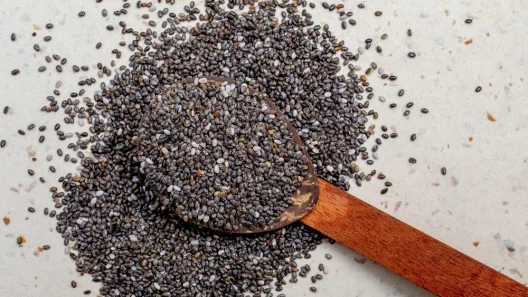Bone broth has emerged from grandmother’s kitchen to become a staple in modern wellness routines, celebrated by nutritionists, fitness enthusiasts, and health-conscious individuals alike. This ancient elixir, once a traditional remedy across countless cultures, has experienced a remarkable resurgence in popularity, particularly in gut health, paleo, and fitness communities where it’s prized for its unique nutritional profile and potential health benefits. The global bone broth market is projected to reach $3.2 billion by 2027, reflecting its growing status as a daily wellness ritual rather than just a soup base . At MyGreenRemedy, we believe in honoring traditional food wisdom while examining it through the lens of modern science. This comprehensive guide explores the evidence behind bone broth’s purported benefits, provides practical ways to incorporate it into your diet, and offers balanced perspective on both its potential and limitations, empowering you to make informed decisions about this trending nutritional powerhouse.
What Is Bone Broth?
The Making of Bone Broth
Bone broth is created by simmering animal bones (typically chicken, beef, or fish) and connective tissues in water for an extended period, usually 12 to 24 hours, often with the addition of vegetables, herbs, spices, and a small amount of vinegar or other acidic ingredient to help extract nutrients from the bones . This prolonged cooking process distinguishes it from regular broth or stock, which are typically simmered for just a few hours. The extended simmering allows for the breakdown of collagen into gelatin and the release of minerals, amino acids, and other beneficial compounds from the bones and connective tissues .
Bone Broth vs. Stock vs. Regular Broth
While these terms are often used interchangeably, there are distinct differences:
- Regular broth is traditionally made by simmering meat (sometimes with bones) with vegetables and seasonings for a relatively short time (1-2 hours), resulting in a light, flavorful liquid .
- Stock is made primarily from bones (often roasted first for deeper flavor) simmered with vegetables for 4-6 hours, yielding a richer liquid than broth but with less body than bone broth .
- Bone broth involves simmering bones and connective tissues for 12-24 hours, resulting in a more nutrient-dense, gelatin-rich liquid with deeper flavor and thicker consistency .
Historical and Cultural Significance
The practice of making broth from bones dates back to prehistoric times, when hunter-gatherers would simmer otherwise inedible animal parts like bones, hooves, and knuckles to extract nutrition . Nearly every traditional culture has some version of bone broth: Jewish penicillin (chicken soup), Vietnamese pho, Italian brodo, Japanese tonkotsu, and Mexican caldo de huesos all represent this cross-cultural wisdom of extracting nutrition from animal bones . These traditional preparations were often valued for their restorative properties, particularly during illness or recovery.
Nutritional Profile of Bone Broth
Collagen and Gelatin
The prolonged cooking of bones and connective tissues breaks down collagen, the most abundant protein in animals and humans, into gelatin, which gives bone broth its characteristic jelly-like consistency when cooled . Collagen and gelatin provide the foundational structural proteins that support skin, bones, joints, and connective tissues throughout the body .
Amino Acids
Bone broth contains several important amino acids that contribute to its potential health benefits:
- Glycine: Supports detoxification, digestion, sleep quality, and the production of creatine, bile salts, and other important biomolecules .
- Proline: Important for collagen formation, skin health, and cardiovascular function .
- Glutamine: The most abundant amino acid in the bloodstream, crucial for gut lining integrity, immune function, and muscle repair .
Minerals
Bone broth contains various minerals extracted from bones during the simmering process, though concentrations vary based on factors like cooking time, acidity, and bone type . These include:
- Calcium: Essential for bone health, muscle function, and nerve signaling
- Magnesium: Involved in hundreds of enzymatic reactions, energy production, and muscle relaxation
- Phosphorus: Works with calcium to build strong bones and teeth
- Potassium: Important for fluid balance, nerve signals, and muscle contractions
Table: Key Nutrients in Bone Broth and Their Potential Benefits
| Nutrient | Potential Benefits | Research Status |
| Collagen/Gelatin | Supports joint, skin, and gut health | Moderate evidence for joints, emerging for gut |
| Glycine | Promotes sleep quality, detoxification, and inflammation regulation | Strong laboratory evidence, limited human trials |
| Glutamine | Supports gut barrier integrity and immune function | Strong in vitro evidence, mixed human results |
| Minerals (Ca, Mg, P) | Contributes to bone health and enzymatic functions | Varies significantly by preparation method |
| Glycosaminoglycans | May support joint lubrication and cartilage health | Limited direct evidence |
Health Benefits of Bone Broth
Gut Health & Digestion
The gelatin and amino acids in bone broth, particularly glutamine and glycine, may support digestive health through several mechanisms. Gelatin can help attract and hold liquids, including digestive juices, potentially supporting proper digestion . Glutamine serves as the primary fuel source for enterocytes (cells lining the intestine), helping maintain the integrity of the gut barrier, a crucial defense against “leaky gut” syndrome where undigested particles pass into the bloodstream, potentially triggering inflammation and immune responses . A 2025 review published in Digestive Diseases and Sciences noted that the amino acids and minerals in bone broth may help fortify the gut barrier and reduce inflammation in digestive conditions like inflammatory bowel disease .
Joint Health
The collagen and gelatin in bone broth break down into compounds that may support joint health by providing building blocks for the body’s own collagen production . As we age, natural collagen production declines, potentially contributing to joint discomfort and reduced mobility. The glycosaminoglycans (GAGs) in bone broth, including glucosamine and chondroitin, are components of cartilage and may support joint lubrication and comfort . While most research has focused on collagen supplements rather than bone broth specifically, the similar composition suggests potential benefits for joint health .
Skin, Hair & Nails
Collagen is a major structural component of skin, hair, and nails, contributing to skin elasticity, hydration, and overall appearance . The amino acids from collagen breakdown (proline, glycine, and hydroxyproline) serve as precursors for the body’s own collagen production . Several studies on collagen supplementation have shown improvements in skin elasticity, hydration, and density, though specific research on bone broth is more limited . The antioxidant properties of certain amino acids in bone broth may also help protect skin from oxidative damage caused by environmental stressors .
Immunity Support
The connection between gut health and immune function is well-established, with approximately 70-80% of immune cells residing in the gastrointestinal tract . The amino acids in bone broth, particularly glutamine, may support gut barrier integrity, potentially preventing the translocation of pathogens and toxins that could trigger immune responses . Additionally, the traditional use of chicken soup for colds and respiratory infections has some scientific support, research has found that chicken soup may have mild anti-inflammatory effects and temporarily increase nasal mucus velocity, potentially helping clear respiratory passages .
Sleep & Relaxation
The amino acid glycine found in bone broth has demonstrated calming effects on the brain and may support restful sleep . Research has shown that glycine can help lower core body temperature (a physiological change that accompanies sleep onset), reduce symptoms of insomnia, and improve sleep quality . In one study, participants taking 3 grams of glycine before bed experienced improved sleep quality, reduced daytime sleepiness, and better cognitive function . While the glycine content in bone broth is lower than therapeutic supplement doses, regular consumption may still contribute to relaxation and sleep support.
How to Add Bone Broth to Your Diet
As a Warm Beverage
The simplest way to enjoy bone broth is to drink it straight as a warm, savory beverage. Heat a cup of bone broth until hot but not boiling (to preserve nutrients), and sip it like you would tea or coffee. Many people enjoy a cup in the morning as a nourishing start to the day or in the afternoon as a satisfying pick-me-up . You can enhance the flavor with a pinch of sea salt, herbs, spices like turmeric or ginger, or a splash of lemon juice .
As a Culinary Base
Bone broth serves as an excellent flavorful foundation for various dishes:
- Soups and stews: Use bone broth instead of water or stock for added nutrition and depth of flavor
- Sauces and gravies: Create rich, nutrient-dense sauces by using bone broth as the liquid base
- Cooking liquid for grains: Cook rice, quinoa, or other grains in bone broth instead of water for enhanced flavor and nutrition
- Braising liquid: Use bone broth when braising meats or vegetables to add moisture and flavor
In Modern Recipes
Creative cooks have found innovative ways to incorporate bone broth into contemporary recipes:
- Bone broth lattes: Blend warmed bone broth with coconut milk, turmeric, and other spices for a creamy, savory beverage
- Smoothies: Add a small amount of bone broth to fruit or vegetable smoothies for a protein boost (the strong flavors of fruits and vegetables typically mask the savory notes)
- Mocktails and cocktails: Use bone broth as a base for savory drinks, combining with herbs, citrus, and sparkling water
- Oatmeal: Cook oatmeal in bone broth instead of water for a savory breakfast option, topped with eggs, avocado, or vegetables
Homemade vs Store-Bought Bone Broth
Making Bone Broth at Home
Homemade bone broth allows for complete control over ingredients and quality:
- Pros: Can select high-quality bones from pastured animals, adjust seasoning to preference, avoid unwanted additives, and is often more economical
- Cons: Time-consuming process (12-24 hours of simmering), requires storage space, and nutritional content can vary batch to batch
A basic homemade recipe involves placing 2-3 pounds of animal bones in a large pot with water, a tablespoon or two of vinegar (to help extract minerals), and optional vegetables, herbs, and spices. Simmer for 12-24 hours, strain, and store in the refrigerator for up to 5 days or freeze for longer storage .
Choosing Store-Bought Bone Broth
When selecting commercial bone broth, look for:
- Quality ingredients: Organic, pasture-raised bones when possible, without artificial additives or preservatives
- Simmering time: Products that specify long simmering times (12-24 hours) for maximum nutrient extraction
- Transparency: Brands that provide information about sourcing and manufacturing processes
- Low sodium options: Especially important for those monitoring salt intake
Both shelf-stable and frozen options can be nutritious choices, though freezing may better preserve some nutrients .
Safety, Myths & Considerations
Heavy Metal Concerns
Some studies have detected heavy metals (particularly lead) in bone broth, raising safety concerns . However, the detected levels are typically very low, in the range of a few micrograms per serving and well below safety thresholds established by regulatory agencies. The 2017 study that initially raised concerns found that while lead was detectable in bone broths, the amounts present posed minimal risk, with a serving containing less than 1% of the provisional tolerable daily intake for adults . Choosing bones from young animals (which have accumulated fewer environmental toxins) and organic sources when possible may help minimize potential contaminants .
Who Should Exercise Caution
While bone broth is generally safe for most people, some individuals should exercise caution:
- Those with histamine intolerance may experience reactions to the histamines that can develop during prolonged cooking
- People with kidney conditions may need to monitor intake due to the mineral content
- Those with specific allergies to bone broth ingredients (though rare)
- Individuals on sodium-restricted diets should choose low-sodium options or make their own without added salt
Moderation and Balance
While bone broth can be a nutritious addition to the diet, it should not be viewed as a miracle food or complete meal replacement. Moderation is key. Most experts recommend 1-2 cups daily as part of a balanced diet rather than excessive consumption . Bone broth complements but does not replace the need for other nutrient-dense whole foods, including fruits, vegetables, whole grains, and lean proteins .
To learn more about Superfoods, check out The Ultimate Guide to Superfoods for Everyday Health.
FAQs
How much bone broth should you drink daily?
Most recommendations suggest 1-2 cups of bone broth daily as a reasonable amount to obtain potential benefits without excess . However, individual needs may vary based on diet, health status, and personal tolerance. It’s best to start with smaller amounts (½ cup daily) and gradually increase while monitoring how you feel.
Is bone broth vegan alternatives possible?
Traditional bone broth is animal-derived, but plant-based alternatives can provide similar umami flavor and some nutritional benefits. Mushroom broth, especially made from mineral-rich mushrooms like shiitake, can provide depth of flavor and minerals. Sea vegetable broths (using kombu, wakame, or other seaweeds) can offer minerals similar to those found in bone broth. While these alternatives won’t provide collagen or the same amino acid profile, they can be nutritious options for those following plant-based diets.
Does bone broth actually boost collagen in the body?
The collagen in bone broth is broken down during digestion into its constituent amino acids, which are then absorbed and can be used as building blocks for the body’s own collagen production . However, these amino acids may also be used for other physiological processes, and the body doesn’t necessarily direct them specifically to collagen synthesis. Research on collagen supplements suggests benefits for skin and joints, but studies specifically on bone broth are more limited . The vitamin C cofactor is important for collagen formation, so consuming bone broth alongside vitamin C-rich foods may support optimal collagen synthesis.
Can athletes use bone broth for recovery?
The protein content (particularly the amino acids glycine and proline), electrolytes, and hydrationproperties of bone broth may make it beneficial for athletic recovery . The minerals in bone broth can help replenish electrolytes lost through sweat, while the protein content may support muscle repair. Some athletes use bone broth as a lighter alternative to traditional protein shakes post-workout, though it typically contains less protein than dedicated recovery supplements .
Conclusion
Bone broth represents a fascinating intersection of traditional food wisdom and modern nutritional science, offering a unique combination of collagen, amino acids, minerals, and other bioactive compounds that may support gut health, joint function, skin integrity, and overall wellness. While research specifically on bone broth is still evolving, the evidence for its individual components, particularly collagen-derived amino acids like glycine, proline, and glutamine, suggests legitimate potential benefits that merit further investigation.
As with any nutritional approach, balance and moderation are key. Bone broth can be a valuable addition to a varied, whole-foods diet but should not be viewed as a miracle solution or replacement for other healthy dietary patterns. Whether you choose to make your own bone broth or select a high-quality commercial product, focusing on ingredients from well-sourced animals and traditional preparation methods will help maximize potential benefits.
For those interested in exploring other gut-supporting foods, we invite you to read our articles on Fermented Superfoods for Gut Health: Kimchi, Yogurt & More and Sea Moss Benefits: Why It’s Trending & How to Use It available on our website.
Remember: This article provides educational information only and should not replace personalized medical advice. Always consult with a healthcare professional before making significant changes to your diet, especially if you have underlying health conditions.










